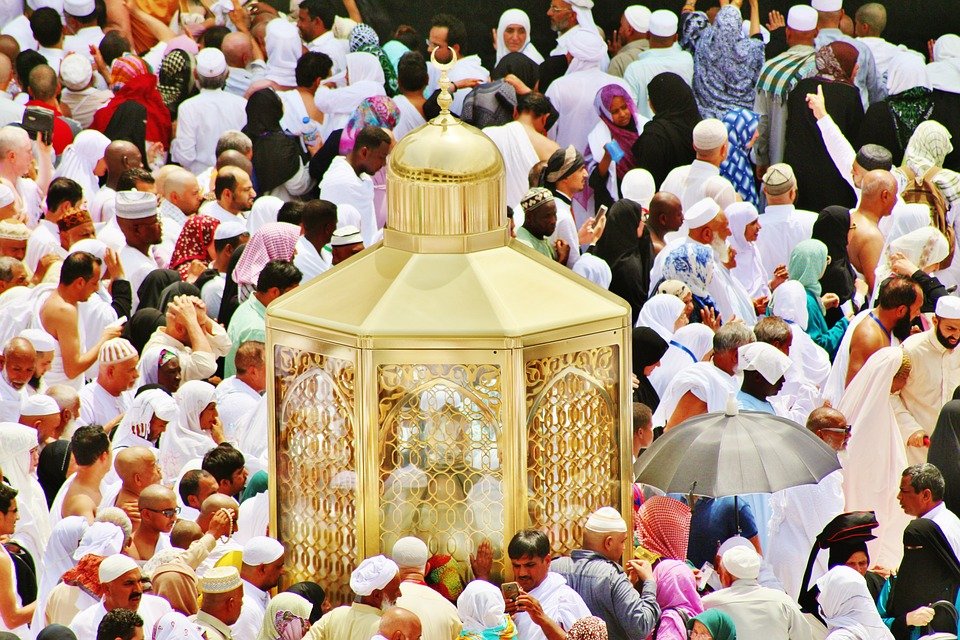You are here to read: When Did Hajj Become Compulsory: Key Historical Insights – A Thoughtfully Written Guide Offering Spiritual Wisdom and Travel Advice for Every Pilgrim who is going on holy journey of Hajj or Umrah.
When did Hajj become compulsory? This question holds great significance in the Islamic faith. Hajj, the pilgrimage to the holy city of Mecca, is not just a spiritual endeavor; it is a fundamental pillar of Islam. In this article, I will guide you through the historical context of when Hajj became compulsory for Muslims. You will find valuable insights into the events that shaped this crucial aspect of our faith and how it continues to resonate with millions of believers today.
Understanding when Hajj became compulsory gives us a deeper appreciation for its significance. I feel that acknowledging the historical insights surrounding this event enriches our perspective on the pilgrimage itself. With over nine years of experience in the Umrah and Makkah travel field since 2016, we are well-equipped to provide clarity on this topic. In my opinion, understanding the importance of Hajj can transform how we view our spiritual obligations and connections as Muslims. Join me as we explore this vital aspect of our faith together.
When Did Hajj Become Compulsory: Key Historical Insights
Hajj is a sacred pilgrimage that Muslims undertake, and it holds immense significance in their faith. But have you ever wondered when Hajj became a compulsory act? The origins and historical context surrounding this obligation are fascinating and enlightening. In understanding when Hajj became mandatory, we can also appreciate the cultural and spiritual layers that enrich this tradition.
The Origins of Hajj
Hajj traces its roots back to the time of Prophet Ibrahim (Abraham), who is believed to have established the pilgrimage rituals. Many believe he built the Kaaba in Makkah after receiving instruction from Allah. The Kaaba holds a special place in Islam as the direction (Qibla) toward which all Muslims pray. The rituals associated with the Hajj are meant to commemorate the actions of Ibrahim and his family.
The practices have evolved over time, but the essence remains the same. Many Muslims participate in Hajj to seek forgiveness and fulfill a crucial pillar of Islam. Even before it became obligatory, thousands traveled to Makkah for pilgrimage. As we tread through history, it becomes clear that the seeds of Hajj were sown long before it transformed into a compulsory act.
The Revelation of the Qur’an
In the 7th century, the Qur’an began to reveal various commandments to the Prophet Muhammad (peace be upon him). This period was revolutionary for Muslims as it laid down the fundamental principles of Islam. Among these revelations was the significance of Hajj. In Surah Al-Baqarah, Allah mentions the pilgrimage as a duty for those who are able to undertake it. This marked a turning point in the religious landscape of the time.
As the teachings of the Qur’an spread, the idea of Hajj gained more prominence among early Muslims. They recognized it not just as a cultural practice but a divine command. The understanding grew: Hajj was not merely a journey but a spiritual obligation that tied them to their faith and community.
You're at the middle of this awesome post at AirlinkHajjandUmrah.com through: When Did Hajj Become Compulsory: Key Historical Insights. Keep reading, it gets better!
The Year of the Farewell Pilgrimage
The Farewell Pilgrimage, performed by the Prophet Muhammad in 632 AD, stands out in Islamic history. During this pilgrimage, he delivered a powerful sermon that emphasized the importance of Hajj. This event is significant for multiple reasons. First, it solidified the ritual aspects of Hajj, clearly defining how the pilgrimage should be conducted. Second, it acted as a profound reminder of faith for the thousands who were present.
During his sermon, the Prophet Muhammad underscored that Hajj is one of the Five Pillars of Islam. This sermon stirred the hearts and minds of many, affirming that Hajj was not merely optional but essential for those who could afford to undertake it. The guidance provided during this pilgrimage helped to shape the future of Islamic practices concerning Hajj.
Historical Context: The Time after Muhammad
After the Prophet Muhammad’s passing, the importance of Hajj became even more significant. The Islamic state was expanding rapidly, with new territories coming under Muslim control. This expansion led to an increase in diverse communities of Muslims. As more people embraced Islam, the shared experience of Hajj grew, knitting together a diverse ummah (community).
The Abbasid and Umayyad Caliphates played crucial roles in promoting the pilgrimage. They established roads, rested areas, and administrative support for the pilgrims. By enhancing the entire pilgrimage experience, they encouraged more Muslims to participate and fulfilled the Qur’anic commandment. This development indicated a collective acknowledgment of the obligation of Hajj among Muslims of that era.
Scholarly Interpretations Over Time
As centuries rolled on, scholars examined the significance of Hajj. They penned treatises to analyze its spiritual depth and rituals. These writings contributed to a more profound understanding of Hajj as not merely an act of devotion but as a transformative experience. Scholars often emphasized that Hajj cleanses one’s soul, reminding the pilgrim of life’s transience and the importance of focusing on spiritual growth.
Through these discussions, not only did the spiritual significance deepen, but the cultural practices surrounding Hajj also flourished. Diverse rituals and traditions intertwined with the pilgrimage, resulting in a rich tapestry of experiences that engaged millions worldwide.
Modern Implications of Hajj
In the contemporary world, Hajj remains a mandatory act for Muslims, reflecting its historical roots. Millions of people from diverse backgrounds gather in Makkah, showcasing unity and devotion. Technology and modern conveniences have transformed how people travel for Hajj, yet the core essence and significance remain intact.
Participating in Hajj today symbolizes faith and serves as a poignant reminder of one’s spirituality. It offers a unique opportunity for self-reflection, encouragement, and community bonding. I believe that the values drawn from historical insights shape modern experiences, connecting us to our rich Islamic heritage.
Conclusion: A Timeless Obligation
In summary, Hajj became compulsory during the time of the Prophet Muhammad, and its historical significance is profound. From its origins with Prophet Ibrahim to its formal establishment in the Islamic faith, Hajj has remained a vital part of Muslim life. The communal aspect, combined with deep personal reflection, enriches the pilgrimage experience.
As we recognize its transformation from a traditional practice to a binding obligation, we must also honor the diverse meanings it holds for Muslims around the globe. I feel that every pilgrimage is a chapter in a shared story—a story that connects us all through faith, history, and spirituality.
That wraps up When Did Hajj Become Compulsory: Key Historical Insights. Thanks for sticking with us till here! Share this: When Did Hajj Become Compulsory: Key Historical Insights with your friends.
Check our homepage at Air Link Hajj & Umrah for more awesome updates.
Some interesting posts are: 1: Umrah Mubarak, 2: When is Umrah closed 2026?, 3: When does Umrah start after Hajj 2026?
Mushu, an experienced Saudi Arabia traveler and writer, shares insightful tips and spiritual reflections to enhance Hajj and Umrah journeys for fellow pilgrims. He has been to Makkah and Madina from 2016 to 2023 many times and his posts will reflect this.







